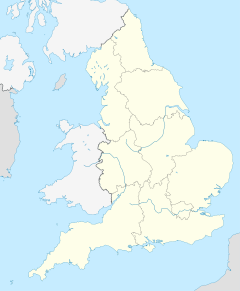
Plympton is a suburb of the city of Plymouth in Devon, England. It is in origin an ancient stannary town. It was an important trading centre for locally mined tin, and a seaport before the River Plym silted up and trade moved down river to Plymouth and was the seat of Plympton Priory the most significant local landholder for many centuries.

Saltram House is a grade I listed George II era house in Plympton, Devon, England. It was deemed by the architectural critic Pevsner to be "the most impressive country house in Devon". The house was designed by the architect Robert Adam, who altered and greatly expanded the original Tudor house on two occasions. The Saloon is considered one of Adam's finest interiors. Saltram is one of Britain's best preserved examples of an early Georgian house and retains much of its original decor, plasterwork and furnishings. It contains the Parker family's large collection of paintings, including several by Sir Joshua Reynolds (1723-1792), born and educated at Plympton and a friend of the Parker family.

A knot garden is a garden of formal design in a square frame, consisting of a variety of aromatic plants and culinary herbs including germander, marjoram, thyme, southernwood, lemon balm, hyssop, costmary, acanthus, mallow, chamomile, rosemary, Calendula, Viola and Santolina. Most knot gardens now have edges made from box, which is easily cut into desired shapes, like dense miniature hedges, and stays green during winters when not all of the "filling" plants are visible or attractive. The paths in between are usually laid with fine gravel. However, the original designs of knot gardens did not have the low box hedges, and knot gardens with such hedges might more accurately be called parterres.

Appleby Castle is in the town of Appleby-in-Westmorland overlooking the River Eden. It consists of a 12th-century castle keep which is known as Caesar's Tower, and a mansion house. These, together with their associated buildings, are set in a courtyard surrounded by curtain walls. Caesar's Tower and the mansion house are each recorded in the National Heritage List for England as a designated Grade I listed building. The uninhabited parts of the castle are a scheduled ancient monument.
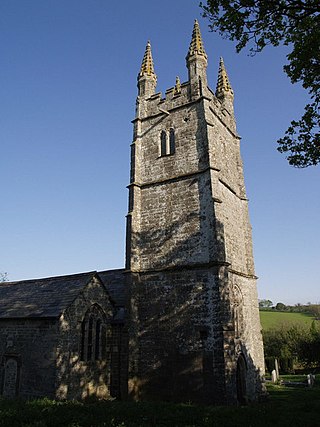
Bradstone is a village in Devon, England, on the River Tamar. It has a small church and a Tudor hall with an attractive gatehouse.

The History of Plymouth in Devon, England, extends back to the Bronze Age, when the first settlement began at Mount Batten a peninsula in Plymouth Sound facing onto the English Channel. It continued as both a fishing and continental tin trading port through the late Iron Age into the Early Medieval period, until the more prosperous Saxon settlement of Sutton, later renamed Plymouth, surpassed it. With its natural harbour and open access to the Atlantic, the town found wealth and a national strategic importance during the establishment of British naval dominance in the colonisation of the New World. In 1620 the Pilgrim Fathers departed from Plymouth to establish the second English colony in America. During the English Civil War the town was besieged between 1642 and 1646 by the Royalists, but after the Restoration a Dockyard was established in the nearby town of Devonport. Throughout the Industrial Revolution Plymouth grew as a major mercantile shipping industry, including imports and passengers from the US, whilst Devonport grew as a naval base and ship construction town, building battleships for the Royal Navy – which later led to its partial destruction during World War II in a series of air-raids known as the Plymouth Blitz. After the war was over, the city centre was completely rebuilt to a new plan.

Totnes Guildhall is a 16th-century Tudor historic guildhall, magistrate's court, and prison, in the town of Totnes, south Devon, in southwest England. It is a Grade I listed building.

Dunsland is a historic manor and former house in the parish of Bradford near Holsworthy in Devon, England. It was successively home to the Arscott, Bickford, Coham and Dickinson families and, although the ownership records are incomplete, it is very likely that the estate passed in an unbroken line from the time of the Norman Conquest until 1947. The house was destroyed by fire in 1967, just after extensive restoration by the National Trust.

Plympton House is the principal residence at the Plympton House Estate, in the parish of Plympton St Maurice, Devon, England. It is a Grade I listed country house, in the William and Mary tradition, near St Maurice's Church in Plympton, commenced by Sir George Treby (1643–1700) and completed c. 1715 – 1720 by his son George Treby. The architect is unknown although accounts in 1720 refer to William Veale, mason. Its kitchen garden wall, southern boundary walls and gate piers and walls are Grade II listed.

The Church of St Mary the Virgin in Pilton is the 13th-century Anglican parish church for the Pilton suburb of Barnstaple in Devon. It has been a Grade I listed building since 1951 and comes under the Diocese of Exeter.
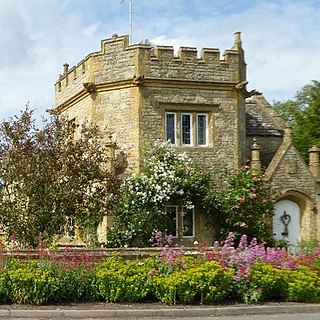
Little Wolford is a hamlet and civil parish in the Stratford-on-Avon district of Warwickshire, England. With the neighbouring parish of Great Wolford it is part of 'The Wolfords'. Little Wolford is significant for its Grade II* listed 15th- to 16th-century Little Wolford Manor.

Mamhead House, Mamhead, Devon, is a country house dating from 1827. Its origins are older but the present building was constructed for Robert William Newman, an Exeter merchant, in 1827–1833 by Anthony Salvin. The house is Grade I listed as Dawlish College, its function at the time of listing. The parkland is listed at Grade II*.
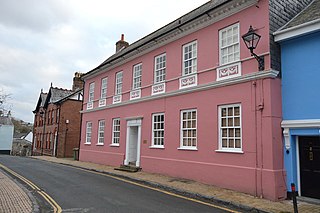
The Old Rectory is a grade II* listed townhouse in Plympton, Devon, England. It was listed on 23 April, 1952.
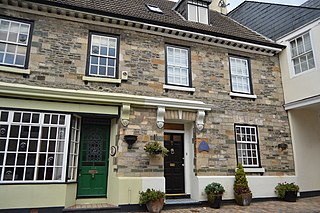
Chapel House is a Grade II listed building in Plympton, Devon, England. Standing at 10a and 10b Fore Street, Plympton's main street, it is believed to have originally been a town house, later developed into a shop with attached house. It dates to the mid-18th century, but contains older remnants.
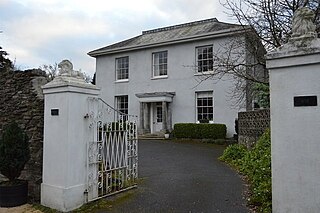
The Lodge is a Grade II listed building in Plympton, Devon, England. Standing at 103 Fore Street, the western end of Plympton's main street, it is a detached villa dating to the early- or mid-19th century.
Tan Cottage is a Grade II listed building in Plympton, Devon, England. It stands in Plympton's main street at 49 Fore Street, behind numbers 45 and 47, and dates mainly to the 17th century, when it was used as a tannery.
Carlton House is a Grade II listed building in Plympton, Devon, England. Standing at 43 Fore Street, Plympton's main street, it dates to the early 19th century.

Church of St Maurice is located in Plympton, Devon, England. Dating to the 15th century, it is now a Grade II* listed building. The church is of Church of England denomination.

The Pent House is a Grade II listed building in Plympton, Devon, England. Standing at 20 Fore Street, Plympton's main street, it dates to the 17th century and is believed to have originally been merchants' houses or tenements of cottages. It is now one property.
24 Fore Street is a Grade II listed building in Plympton, Devon, England. Standing on Plympton's main street, it dates to the late 18th century.

